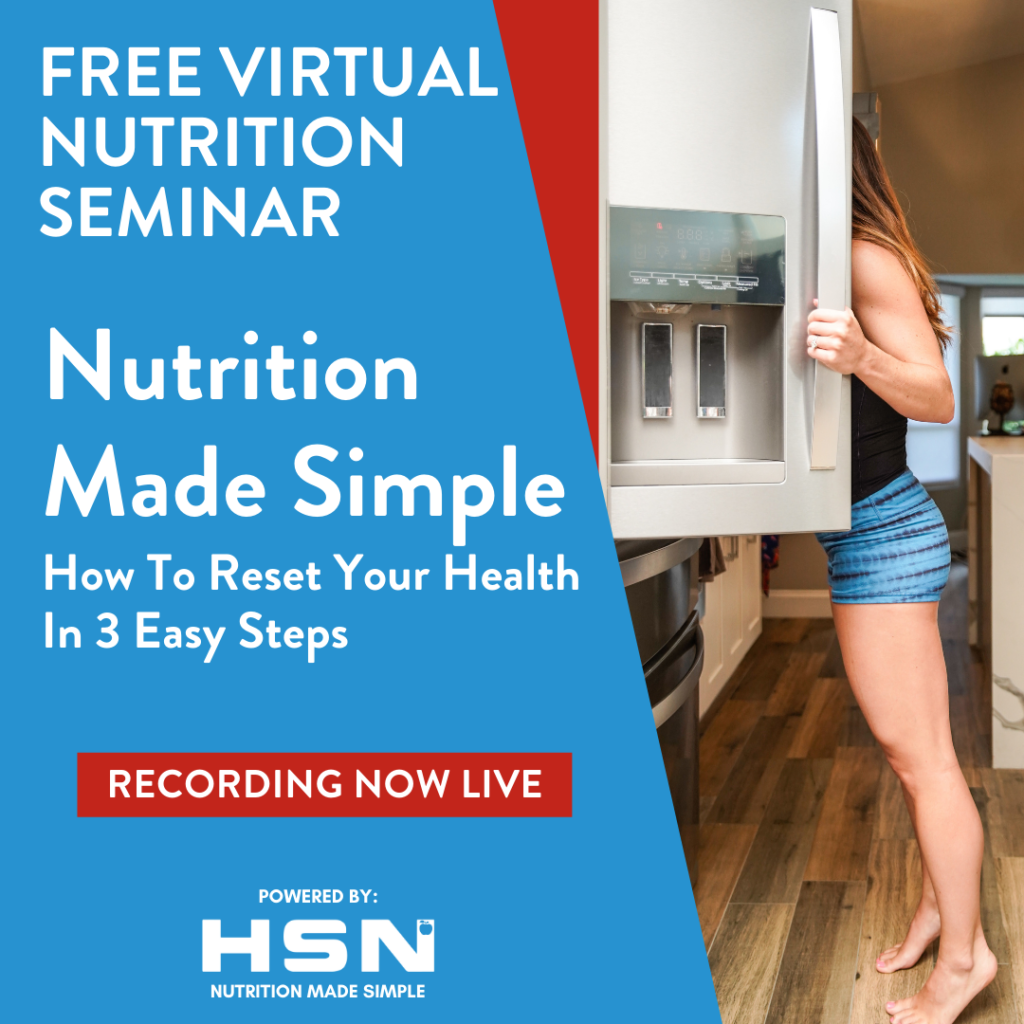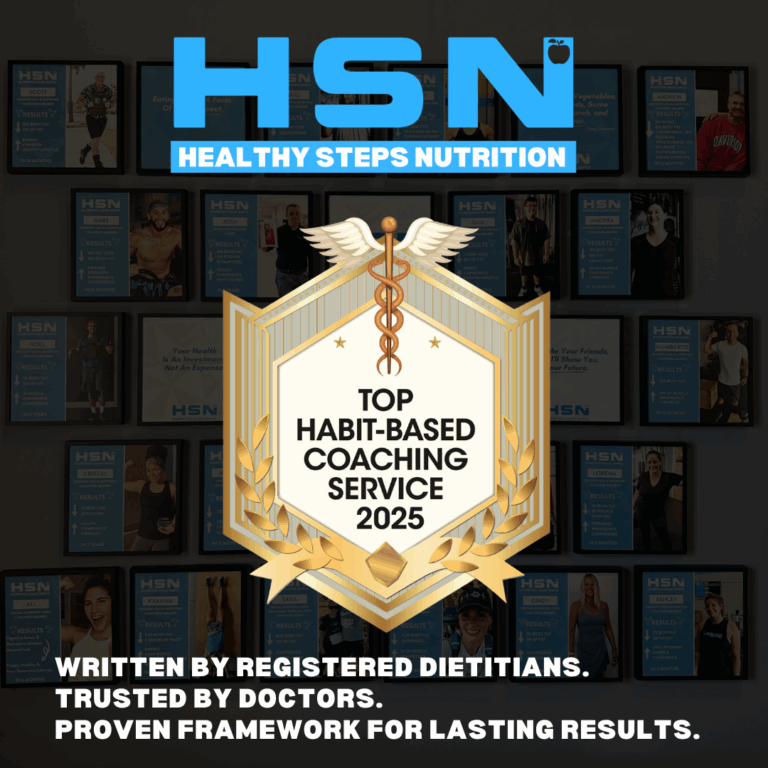Hormone health is one of the hottest topics in nutrition coaching right now. Women all around the world want to know more about their health and how hormones play a big role in how they feel, and what their mood is like. Mood and food are closely linked, and emotions can have a dramatic effect on eating patterns. For example, people in good moods tend to eat healthy foods, but when experiencing negative emotions like anxiety, frustration, or anger, people may turn to food for comfort.
Someone trying to optimize their health who is also suffering from unbalanced hormones can have a really hard time choosing healthy options to eat when their hormones are affecting their mood, which ultimately affects their food choices.
At Healthy Steps Nutrition, Registered Dietitian Amanda Haar, who has over a decade of experience with hormone health, teaches a hormone masterclass to our HSN Mentoring clients so nutrition coaches all over the world are educated on how to help their clients optimize their hormone levels. She has taught us some simple action steps that can be taken on our own to begin the hormone optimizing journey to reduce exposure to hormone disruptors.
In this article we are going to talk about hormone disruptors and highlight four steps you can start TODAY to help reduce your toxic burden.
What Are Hormone Disruptors And How Do They Work?

Hormone disruptors also known as endocrine disrupting chemicals (EDCs), are natural or man-made chemicals that can interfere with the body’s endocrine system. The endocrine system is a network of glands that produce hormones, chemical messengers that travel through the bloodstream and tell your cells what to do. They play a crucial role in many important bodily functions, including:
Growth and development
Metabolism
Reproduction
Mood
Regulation of other hormones.
Endocrine Disrupting Chemicals can work in three main ways:
Mimicking Hormones: Some EDCs have a similar structure to natural hormones, tricking the body’s cells into accepting them as the real deal. This can lead to an overactive hormonal response or interfere with the action of the natural hormone.
Blocking Hormone Receptors: Instead of mimicking the hormone itself, EDCs might bind to the receptor sites, blocking the natural hormone from docking and delivering its message. This disrupts the intended hormonal signal.
Interfering with Hormone Production or Breakdown: EDCs can also disrupt the normal production, transport, or breakdown of hormones within the body, creating imbalances.
These hormone or endocrine disruptors can potentially lead to a variety of health problems.
Potential Adverse Health Effects Of Endocrine Disruption

Hormone disruptors (EDCs) are linked to a wide range of potential health problems throughout various stages of life.
Here’s a high level breakdown of some potential concerning effects:
Developmental Issues: Exposure during critical developmental stages like pregnancy and puberty can be particularly risky. These issues can have lifelong consequences.
Potential Problems: Birth defects, delayed puberty, learning disabilities
Reproductive Problems: EDCs can disrupt hormones crucial for reproduction, leading to difficulties in having children and maintaining hormonal balance.
Potential Problems: Infertility, endometriosis, irregular menstrual cycles
Cancer: Some EDCs are linked to an increased risk of certain hormone-sensitive cancers.
Potential Problems: Breast cancer, prostate cancer
Metabolic Problems: EDCs might contribute to imbalances that affect how your body processes energy.
Potential Problems: Obesity, diabetes, other metabolic disorders
Thyroid Issues: EDCs can interfere with the thyroid gland’s function, leading to disruptions in metabolism and other bodily functions.
Potential Problems: Hypothyroidism (under active thyroid), Hyperthyroidism (overactive thyroid)
Neurological Issues: Emerging research suggests a potential link between EDCs and neurological problems. More research is needed to confirm these connections.
Potential Problems: ADHD, Autism spectrum disorder
It’s important to remember that research on EDCs and their health effects is ongoing. The sources linked above can provide you with more detailed information about scientific studies and ongoing research updates.
Steps To Reducing Exposure To Hormone Disrupting Chemicals
Endocrine disrupters are found all around us in everyday consumer products we use daily. Human health has never been more at risk by the toxins in our environment. Becoming aware of what products you are using in your daily life that contain these toxins is the first step. The next step is limiting your exposure to avoid adverse effects on your health.
Here is how you can begin to do this:
Step #1 - Evaluate the ingredients in your personal care products

Personal care products are made of so many toxic chemicals. Women are sometimes putting poison on the skin closest to their most important organ, the brain. Make up, lotions, serums, lip balm, eye shadow and more are sometimes full of these toxins.
Begin by turning on the flashlight on your phone and reading the fine print ingredient list.
Look for chemicals such as:
Phthalates
Parabens
“Fragrance” (could be made of phthalates
Formaldahyde
Octisalate
Homosalate
Consider “clean beauty”. Brands such as Honest, Bare Minerals, Juice Beauty, and ILIA all have products made with non toxic ingredients. A great resource to check the ingredients of your products is EWG – Skin Deep.
Step #2 - Check the chemicals in your cleaning products

Cleaning products are chalked full of toxic chemicals. Unknowingly people around the world are poisoning themselves in their everyday life because of the chemicals in cleaning products.
Chemicals to look for in cleaning products:
Triclosan
Chlorine bleach
I took it a step further than most and I make my own cleaning products, however there are many clean brands out there! Brands such as Branch Basics, and Green Llama are just a couple.
Check out the EWG Verified cleaning products for an expansive list of toxin free alternatives.
Step #3 - Reduce your exposure to plastic food containers

Plastic bottles and food packaging contain many toxic chemicals such as:
-
BPA,
-
Phthalates
-
Per – and polyfluoroalkyl substances (PFAS).
Even products like plastic wrap and the sandwich bags your food is put in at fast food restaurants can contain some of these nasty chemicals. Practice cooking and storing food in glass containers rather than plastic. Additionally drinking out of stainless steel or glass cups reduces exposure.
If forced to use plastics, look for products that say BPA and PFAS free.
Step #4 - Watch out for pesticides

Pesticides can be found in a variety of places throughout our environment, contaminating air, water, and even soil. Foods grown in soil where pesticides have been sprayed are contaminated with toxic hormone disruptors.
Reduce your exposure to these chemicals by choosing to purchase organically grown produce, and meat from grass fed cows.
EWG puts out a list called the “Dirty Dozen”. On this list are the twelve most contaminated fruits and vegetables. When making the choice between organic and traditionally grown produce, highly consider choosing organic for the items on the Dirty Dozen list.

Wrap Up
Empower yourself to protect your health. The potential health risks associated with hormone disruptors are a cause for concern, but knowledge is power.
By understanding how EDCs work and where they lurk, you can take proactive steps to minimize exposure and create a healthier hormonal environment for yourself and your family. Start by improving product choices for one of the four steps above and build over time. These are powerful steps to improving hormonal balance which will improve mood, and the food we choose to eat.





